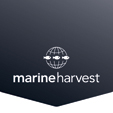Volumes down, costs up for MH Scotland

MARINE Harvest Scotland’s harvest volumes in the first quarter of 2017 were down significantly on the same period last year, according to the company’s Q1 report, published yesterday.
The first quarter harvest volume was 8,691 tonnes gutted weight, a decrease from the corresponding quarter in 2017 (17,772 tonnes). This was due to a lower opening biomass, as a consequence of biological challenges and lower production, and timing of smolt stockings.
Although reduced from the fourth quarter of 2017, the cost level per kg harvested increased in the first quarter of 2018 compared to the first quarter of 2017. This was due to mortality, negative scale effects from lower volumes and harvesting from lower performing sites than in the comparable quarter.
Biological costs per kg in Scotland increased by 43 per cent in the first quarter of 2018 compared to the corresponding quarter of 2017, mainly due to increased health costs, mortality and negative scale effects.
Incident based mortality of EUR 1.0 million (EUR 0.7 million) was recognised due to anaemia and fish damaged in a storm.
Sea lice levels at the end of the quarter were higher than at the end of the comparable quarter of 2017.
Operational EBIT in Scotland amounted to EUR 16.1 million in the first quarter (EUR 55.4 million, Q1 2017), the equivalent of EUR 1.85 per kg (EUR 3.12). The effects of higher achieved prices and increased margin from Consumer Products on salmon of Scottish origin were more than offset by lower harvest volume and cost increases. Financial EBIT amounted to EUR 14.7 million (EUR 18.0 million)
Production in the first quarter has been adversely impacted by low seawater temperatures and storms.
The company said in its report: ‘The biological performance has been challenging for our Scottish operations during the last quarters on low volumes and lower performing sites.
‘This situation is not expected to improve significantly in the next quarter. Accordingly, costs are expected to remain high also in the second quarter of 2018.’
However, it added that while biology in Scotland continues to be challenging, ‘the results in the quarter were satisfactory supported by good contract prices. The price achievement was significantly above the reference price, and the board is pleased that the sales contracts contribute positively.’
In Norway and Scotland, the share of fish undergoing medicinal treatments against sea lice decreased in the first quarter of 2018 compared with the first quarter of 2017, while it increased in Chile and was stable in Canada.
The capacity of non-medicinal solutions has increased in the operating units, reducing the overall dependency on medicinal treatments. Extensive development and testing of non-medicinal tools and methods continues.
Overall, Marine Harvest Group reported operational earnings (EBIT) for the first quarter of 2018, totalling 862 million euros, down from 892 million euros for the same period last year when prices were at an all-time high.
But given the fluctuation salmon prices over the past 12 months, the results are seen as more than encouraging. Marine Harvest has described the results as ‘good’, supported by a strong market outlook and a solid financial position. The board has agreed a quarterly dividend of NOK 2.60 per share.
Supply from Norway increased by six per cent compared to the first quarter of 2017, which was less than expected. A cold winter in Norway with lower than expected sea water temperatures has resulted in less growth.
CEO Alf-Helge Aarskog said: ‘The demand for salmon has increased globally this year, compared to the end of 2017. This has led to high prices and a good result for Marine Harvest in the first quarter.’
The total harvest volume during the period was 81,212 tonnes in the quarter (83,768 tonnes in 2017). Estimated harvest volumes for the full year of 2018 have been reduced from 410,000 tonnes to 400,000 tonnes due to less growth in sea.
Salmon of Norwegian origin achieved an operational EBIT per kilo of 2.26 euros (2.52 in 2017) in the first quarter, while salmon of Canadian origin reported operational per kilo of 1.85 and 1.10 euros respectively ( 3.12 and 3.42 euros in 2017). Salmon of Chilean origin reported operational EBIT per kilo of 1.36 euros in the quarter (1.87 euros 2017).

